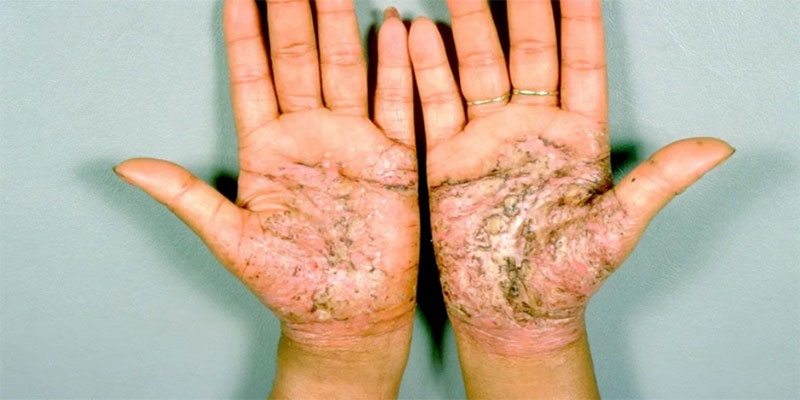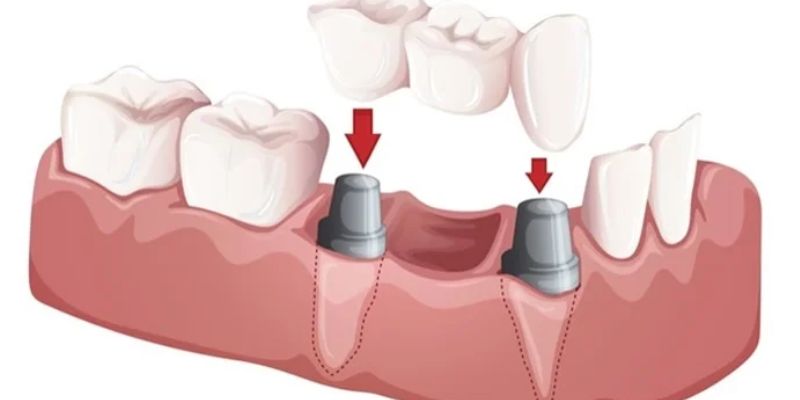How Does Pustular Psoriasis Appear
Oct 11, 2023 By Madison Evans
Patches of discolored, flaky skin are a symptom of psoriasis. There's no specific location for it. However, the knees and elbows are typical hotspots. Psoriasis can appear at any age, although most cases are seen in adults between the ages of 15 and 35.
Children less than ten years old rarely get the ailment. Psoriasis can take many forms and is not infectious. Pustular psoriasis is a kind that causes white, noninfectious blisters filled with pus.
It's exceedingly unusual, affecting just 3.3 percent of trusted Sources of persons with psoriasis, according to an earlier 2009 survey. Information gathered from various sources between 1970 and 2000 was utilized to compile the study.
Pustular psoriasis can arise with other psoriases, such as plaque psoriasis. It can appear anywhere on the body, including the hands and feet. It's rarely seen on the face.
Diagnosis of Pustular Psoriasis

Psoriasis pustulosa is not like any other skin rash. If your rash, blister, or open sore doesn't heal or worsens, you should see a doctor. Your doctor may order a CBC to look for evidence of inflammation and white blood cell abnormalities to make a diagnosis of pustular psoriasis (WBCs). Reduced numbers of lymphocytes (a kind of WBC) may be detected in people with pustular psoriasis.
Types And Symptoms of Pustular Psoriasis
Psoriasis pustulosa can have several forms.
Psoriasis von Zumbusch
The most severe form of pustular psoriasis is von Zumbusch psoriasis or acute generalized pustular psoriasis. This occurrence is relatively uncommon.
Red, aching patches of skin are the first sign. Typically, pustules appear within a few hours and heal in a day or two. Cycles of von Zumbusch psoriasis can occur, with flare-ups occurring every few days to weeks.
The prognosis is better in youngsters than in adults when it does arise. Without medical intervention, the disease frequently improves on its own in youngsters.
Possible symptoms include:
- Intense scratching
- fever
- Quick heartbeat
- Weak Muscles
Palmoplantar pustulosis (PPP)
As a kind of localized pustulosis, palmoplantar pustulosis (PPP) is another name for the condition. This kind of pustular psoriasis occurs on the:
- the palms of one's hands
- the bottoms of the feet
- the outsides of the heels
Red skin spots develop bumps, which eventually turn brown, peel, and crust over. PPP can come and go in cycles, much like von Zumbusch psoriasis, and cause the skin to seem rough and cracked. The prevalence of PPP is more significant among smokers than among non-smokers.
The following are examples of possible symptoms:
- Itching
- Pain
- Tingling or burning in the extremities
- mobility issues and manual functioning impairment
Acropustulosis
Rarely seen pustular psoriasis is called acropustulosis. Intense discomfort from blistering and peeling at the tips of fingers and toes is a telltale sign of this disease. The bumps might leak and leave behind bright red, scaly areas.
This psoriasis is frequently the result of a skin infection or an injury to the skin. Toenail abnormalities and bone and finger structure alterations might occur if the condition worsens.
Some people mistake acropustulosis for hand, foot, and mouth disease (HFMD). Acropustulosis, in contrast to HFMD, is not accompanied by a high temperature or a sore throat.
Pustular Psoriasis Causes And Triggers

Psoriasis's precise origins are unknown, but researchers know that the immune system plays a role. Psoriasis can be triggered by, or make you more susceptible to, several factors. Several factors might set off an outbreak of pustular psoriasis.
• emotional stress
• pregnancy
• skin injury
• infection
Medications
The use of certain medications can also trigger pustular psoriasis. Systemic drugs, such as corticosteroids, are included in this category, as are topical treatments. Up to three weeks after starting the medication, side effects may begin to manifest.
Rapid tapering off of topical or systemic corticosteroids, such as prednisone, can potentially cause the onset of pustular psoriasis (Rayos). Prednisone is used for treating several skin problems but is typically not indicated for psoriasis owing to the flare-ups it may provoke.
But a 2021 study by Trusted Source of 1,970 adults with psoriasis reported that, after three months on systemic corticosteroids, relatively few persons with pustular psoriasis developed significant flare-ups.
Pregnancy-Associated Pustulosis
Impetigo herpetiformis, or pustular psoriasis during pregnancy, is a highly unusual type of psoriasis. It can be life-threatening for the mother and fetus if it's not addressed.
It is typical for pregnancy-related pustular psoriasis to manifest in the first few weeks of the third trimester. It can recur in subsequent pregnancies, typically at an earlier stage.
The following are examples of possible symptoms:
- pus-filled lumps on the inner thighs and groin that merge and spread
- breakouts within the mouth and around the cuticles

What Does 'Moderate-Intensity Exercise' Mean Anyway: An Overview

Pregnancy and Immunity: Are You at Risk?

HIIT Unveiled: The Truth Behind 7 Common Misconceptions

Reason Improving Sleep Can Prevent Migraine Attacks

Understanding Fat Storage and Energy Conversion in the Human Body

Folic Acid: A Complete Guide

What Is a Dental Bridge

Forehead Pimples? 5 Reasons Why They Keep Appearing

The Potential of Coffee Enemas

Is It Safe To Have A Bigger Baby? Gaining Weight as a Baby

Navigating the Ideal Nutrition: Best Diet Choices for Gout Sufferers
